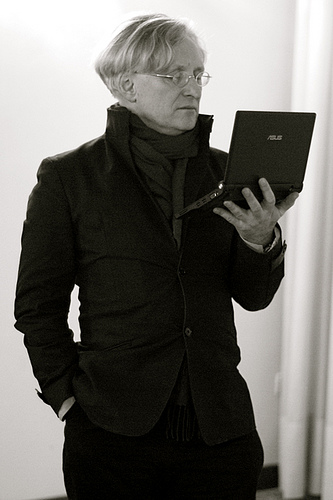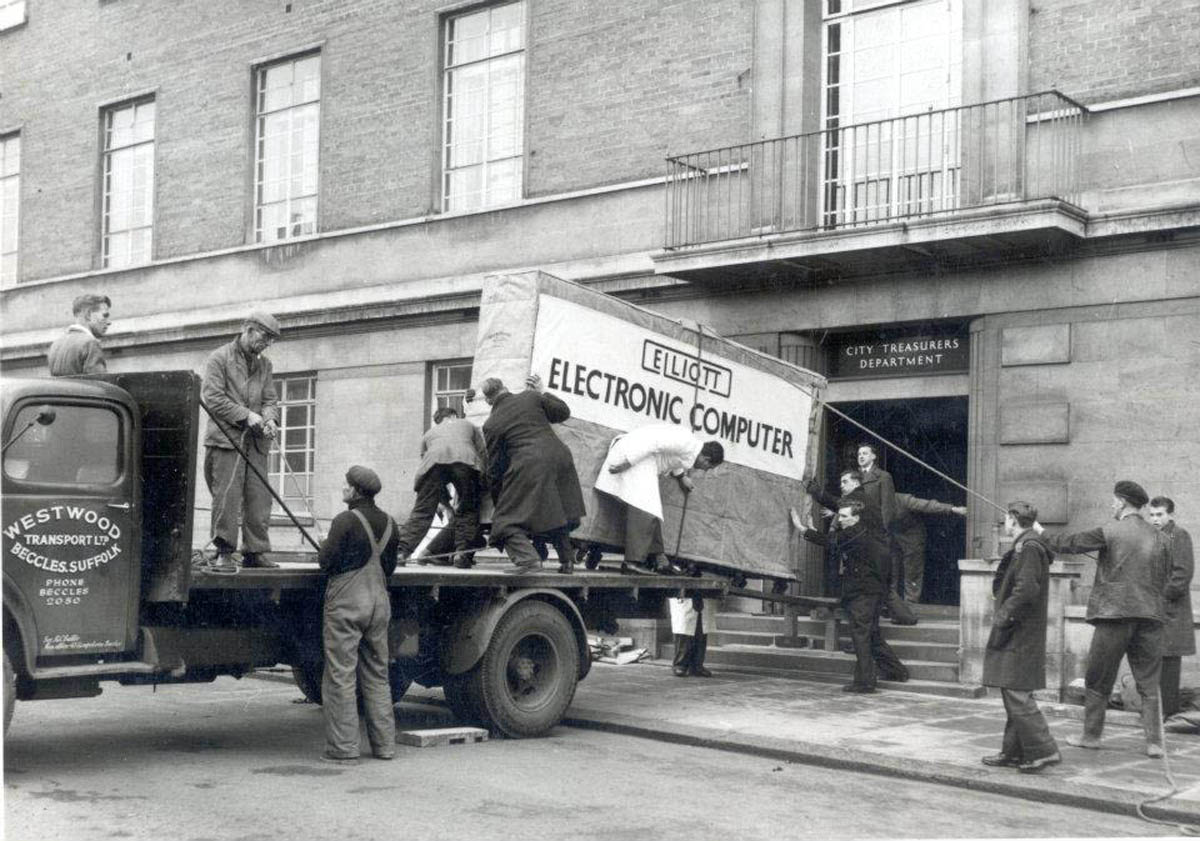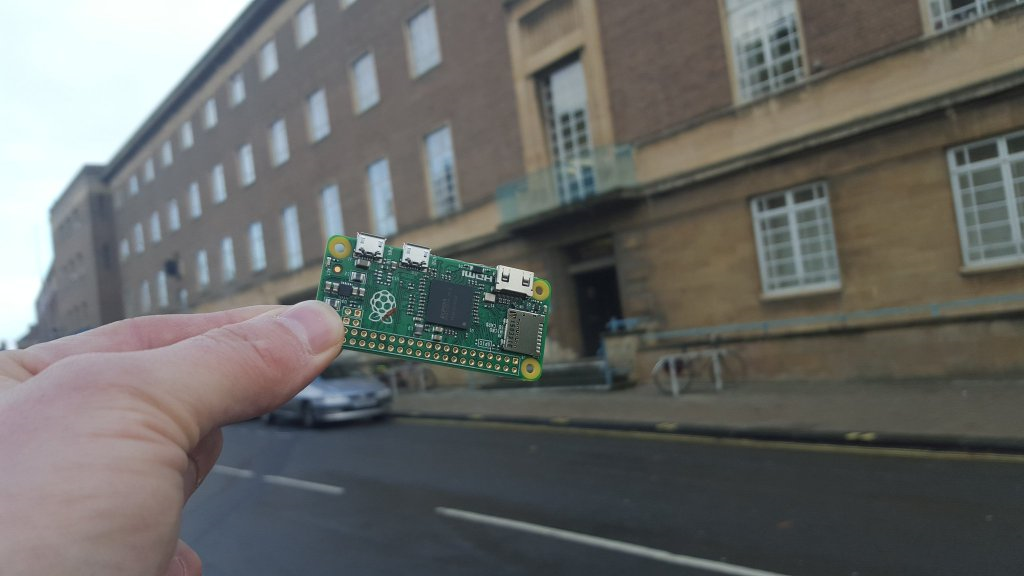
The Web has turned into a programming environment, turning its back on its earlier roots of simplicity and ease-of-use. And in the process many properties of the early web have been lost. This talk will examine some of the desirable properties of a future web, such as accessibility, usability, semantics, decentralisation, privacy, aggregation and even what to do about the password problem.

Just one of 21 cabinets that were installed.

The first computer so cheap that it was given away free with a magazine.
Yep, that's the same buillding.
Want to guess if and by how much faster the Raspberry Pi is than the Elliott?
The same? 10? 100? 1000 times?
About ONE MILLION times faster...
| Elliott 405 | Raspberry Pi Zero | Factor | |
|---|---|---|---|
| Year | 1957 | 2015 | 58 |
| Price | £85,000 (1957) (£2M-7M in 2015 money) | £4 (~ £0.15 in 1957 money) | ½M-2M |
| Instruction cycle time | 10.71-0.918 ms (93-1089 Hz) | 1 ns (1 GHz clock) | 1M |
| Main memory | 1280 bytes (nickel delay lines) | 512 MB LPDDR2 SDRAM | ½M |
| Secondary memory | 16 kB drum store | 8 GB (typical micro SD flash card - not included) | ½M |
| Tertiary memory | 1.2MB (300,000 word magnetic film) | 1TB (Typical external disk - not included) | 1M |
| Output bandwidth | 25 characters/s | 373 MB/s (HDMI) 60MB/s (USB) | 2M-10M |
| Weight | 3-6 tons | 9 g | ½M |
| Size | 21 cabinets, each 2m x 77cm x 77cm | 65mm x 30mm x 5.4mm | 2.3M |
| Median UK wage | Around £250 (men), £125 (women) | Around £30000 (men), £25000 (women) | 120-200 |
So the Raspberry Pi is:
A factor of a million million (billioen in Dutch, trillion in English).
Funnily enough, that is almost exactly what Moore's Law would have us expect for that length of time (even though 1957 is before Moore's Law was thought of, and predates integrated circuits).
A terabyte is a million million bytes.
Nowadays we talk in terms of very large numbers.
Want to guess how long a million million seconds is?
A year? Ten years? A century?
Is 30,000 years...
In other words, a really big number...
In the 50's, computers cost in the millions. Nearly no one bought them, nearly everyone leased them.
To rent time on a computer then would cost you of the order of $1000 per hour: several times the annual salary of a programmer!
When you leased a computer in those days, you would get programmers for free to go with it. Programmers were essentially free (in comparison with the cost of the computer).
 In the 50's the computer's time was expensive.
In the 50's the computer's time was expensive.
So a programmer would write the program, copy it to special paper, give it to a typist, who would type it out, then give the result to another typist who would then type it out again to verify that it had been typed correctly the first time.
Why all this extra work? Because it was much cheaper to let 3 people do this work, than to let the computer discover the errors for you.
And so programming languages were designed around the needs of the computer, not the programmer. It was much cheaper to let the programmer spend lots of time producing a program than to let the computer do some of the work for you.
Programming languages were designed so that you tell the computer exactly what to do, in its terms, not what you want to achieve in yours.

Costs of computers vs programmers
1957-2016
It happened slowly, almost unnoticed, but nowadays we have the exact opposite position:
Compared to the cost of a programmer, a computer is almost free.
I call this Moore's Switch.
But, we are still programming in programming languages that are direct descendants of the languages designed in the 1950's!
We are still telling the computers what to do, not what we want.
| 1960: Algol60 | Now: Python |
for i := 99 step -1 until 1 do
begin
bottles(i);
outstring(" on the wall, ");
bottles(i);
outstring("\n");
outstring("take 1 down,
pass it around,");
bottles(i - 1);
outstring(" on the wall.\n");
end;
end
|
for quant in range(99, 0, -1):
if quant > 1:
print quant, "bottles of beer on the wall,", quant, "bottles of beer."
if quant > 2:
suffix = str(quant - 1) + " bottles of beer on the wall."
else:
suffix = "1 bottle of beer on the wall."
elif quant == 1:
print "1 bottle of beer on the wall, 1 bottle of beer."
suffix = "no more beer on the wall!"
print "Take one down, pass it around,", suffix
print "--"
|
A new way of programming.
It describes what you want to achieve, but not how to achieve it.
Declarative approaches describe the solution space.
A classic example is when you learn in school that
The square root of a number n is the number r such that r × r = n
This doesn't tell you how to calculate the square root; but no problem, because we have machines to do that for us.
function f a: {
x ← a
x' ← (a + 1) ÷ 2
epsilon ← 1.19209290e-07
while abs(x − x') > epsilon × x: {
x ← x'
x' ← ((a ÷ x') + x') ÷ 2
}
return x'
}
A Procedural Clock

1000 lines, almost all of it administrative. Only 2 or 3 lines have anything to do with telling the time.
And this was the smallest example I could find. The largest was more than 4000 lines.
type clock = (h, m, s) displayed as circled(combined(hhand; mhand; shand; decor)) shand = line(slength) rotated (s × 6) mhand = line(mlength) rotated (m × 6) hhand = line(hlength) rotated (h × 30 + m ÷ 2) decor = ... slength = ... ... clock c c.s = system:seconds mod 60 c.m = (system:seconds div 60) mod 60 c.h = (system:seconds div 3600) mod 24
XForms is a declarative system that lets you define applications.
It is a W3C standard, and in worldwide use.
And it is in ODF!
A certain company makes BIG machines (walk in): user interface is very demanding — traditionally needed 5 years, 30 people.
With XForms this became: 1 year, 10 people.
Do the sums. Assume one person costs 100k a year. Then this has gone from a 15M cost to a 1M cost. They have saved 14 million! (And 4 years)
Manager: I want you to come back to me in 2 days with estimates of how long it will take your teams to make the application.
(Two days later)
Programming man: I'll need 30 days to work out how long it will take to program it.
XForms man: I've already programmed it!
The British National Health Service started a project for a health records system.
One person then created a system using XForms.
In 60 years computers have got a million million times better, and programmers probably not even ten.
This is because people are still using programming languages that are based on the idea that the computer's time is more important than the programmer's.
Programs give a solution rather than describe the problem.
Declarative programming allows programmers to work ten times faster: what you now write in a week, would take a morning; what would take a month would now take a couple of days.